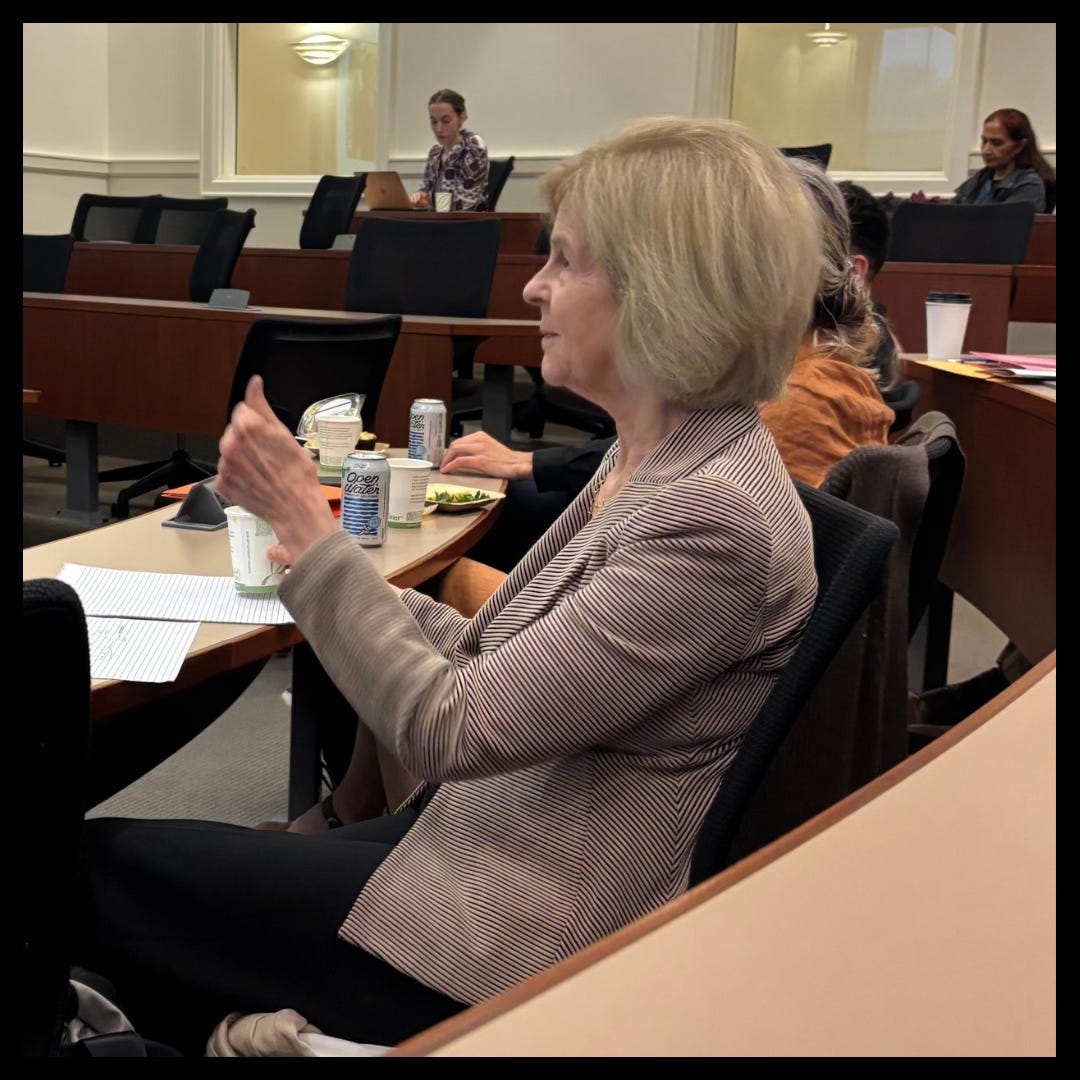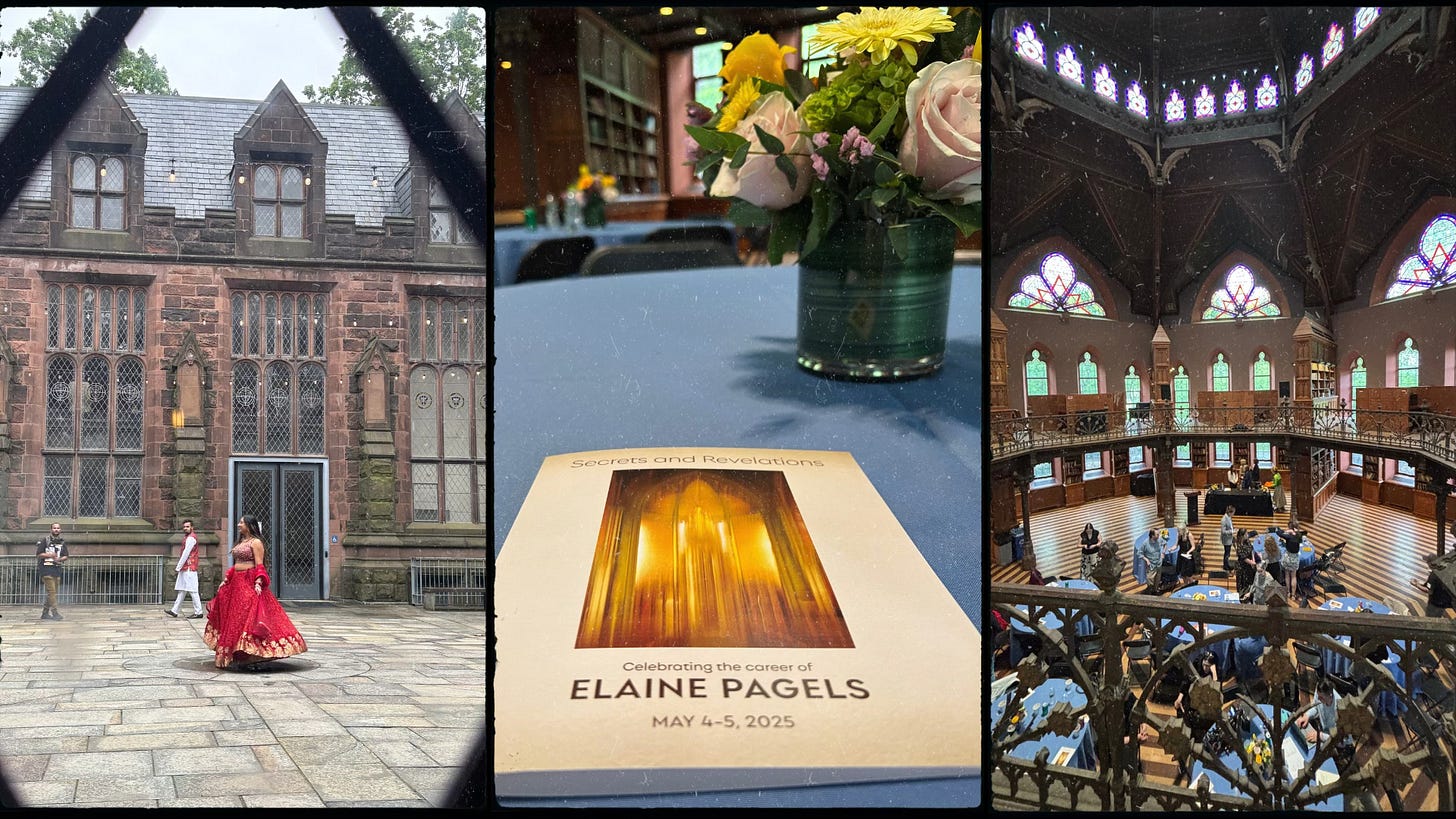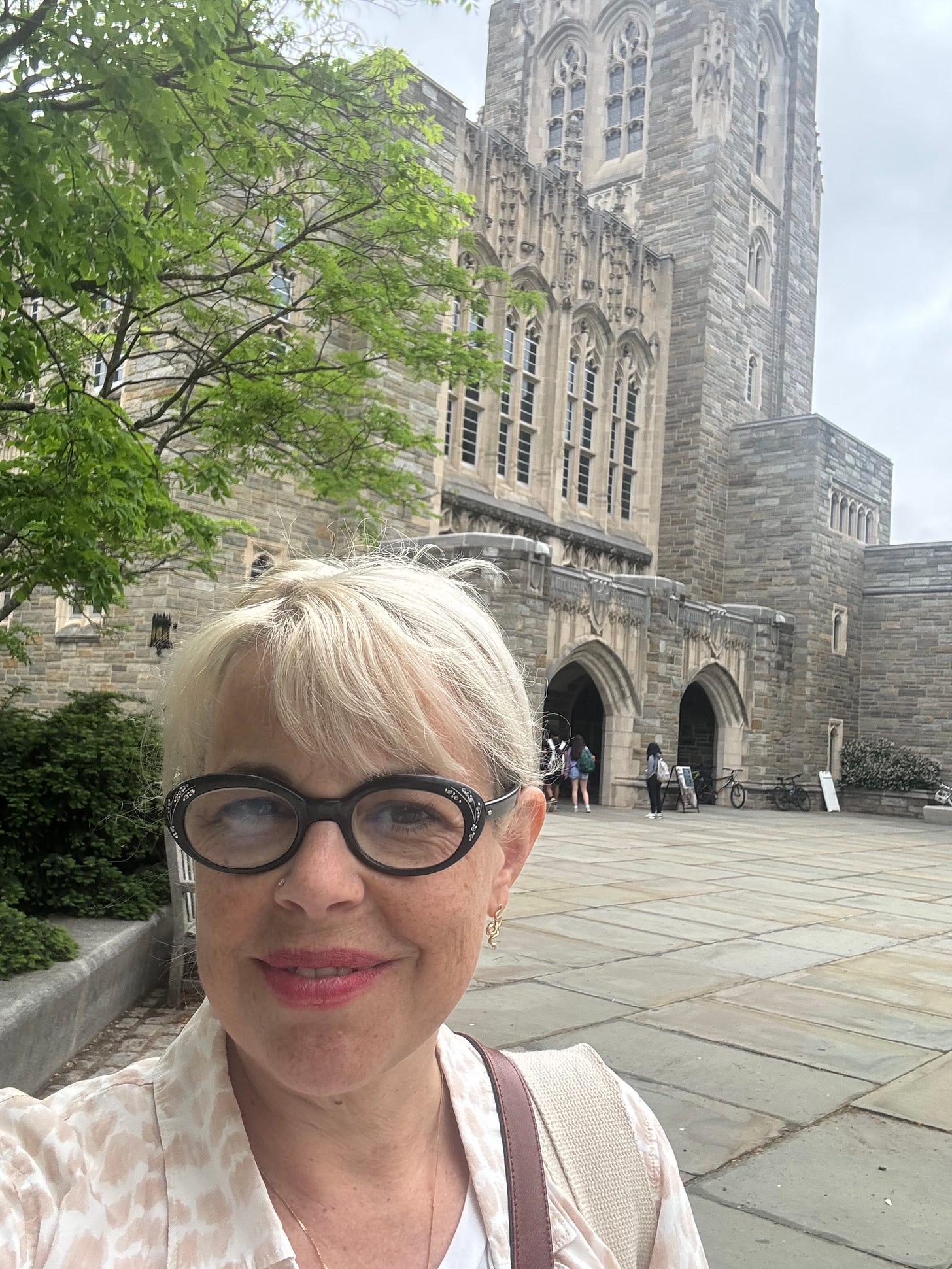Secret Ancient Texts & the Art of Reading "Esoterically"
A Special Upcoming Live Chat on 5/18/25, 2-4pm EDT
Business first:
The link to the Live Chat on 5/18/25, 2-4pm, which is open to all sustaining subscribers, will be at the end of this post. This month’s chat will run a little longer than usual because rather than look at a specific hymn, I’ll give a wee little talk on foundations of esoteric interpretation (more on that below), then will open it up to your questions.
Optional: Bring a question about a passage from any of the hymn translations I’ve published (did you know you can search my substack posts to find hymns?), and we’ll look at it together on the spot! This is precisely how Elaine would best like to be celebrated - with spontaneous, friendly esoteric study.

Legacies
I’ve been out of town recently for a Princeton conference celebrating the life and work of my former advisor Elaine Pagels (author, among other things, of The Gnostic Gospels; The Gospel of Thomas; The Gospel of Judas; Adam, Eve, and the Serpent; and most recently Miracles and Wonders).
Elaine is a GIANT among scholars - probably the only person in the world who can say that she has won a MacArthur “genius” grant, received National Humanities Medal from President Obama, AND found herself immortalized as a character in a video game (Cyberpunk 2077). Plus, she is genuinely one of the nicest, warmest, most down-to-earth people I have ever met in my life period — academic or not.

Lineages
It was a treat to be a humble former student back among the roomful of eminent scholars of ancient magic, esoterica, and religion assembled to celebrate Elaine. The experience made me think more deeply about my own project, and appreciate how much of it depends on the sort of rigorous, ground-breaking training I received at Elaine’s hands.
A large part of what I’ve been trying to do in my work here on Substack, and especially with my Live Chats, is to recreate the sort of deeply curious, empathetic readings of ancient esoteric texts that I was first taught by Elaine back in the 90s, where each week, she gathered a handful of grad students in her messy, but homey, book-lined office to engage in collaborative, on-the-spot translations of the so-called “secret” gospels.
Stories abound among Elaine’s students about her famous approachability and generosity of spirit, a “vibe” we have all, over the course of the years, tried to replicate in our own teaching life. If I’ve at all managed to create a sense of shared wonder and collaborative inquiry, it’s due to her example.
Passing/Paying it Forward
Inspired by Elaine’s work and example, I’m dedicating my next Live Chat to some of the core lessons I learned at her feet — ways of engaging with texts that are ABSOLUTELY VITAL to anyone seeking to understand ancient esoteric texts.
These “operating assumptions” I learned from her are only the Orphic Hymns, but all sorts of ancient Mystery and temple traditions, as well as certain ancient technical texts (medicine, alchemy, and astrology) in general:
In general, how should we approach written myths and religious texts from the ancient world? What should (and shouldn’t) we keep in mind?
What do we mean when we say something is “esoteric”? And is this the same as saying it is “secret”? What types of ancient texts and religious practices fall into each of these categories?
What sorts of secret societies and texts existed in the ancient Mediterranean world and how (if at all) do they relate to each other?
How and why did people produce secret texts and teachings?
How can we ACCESS the secret teachings of these ancient traditions when they were explicitly made NOT to be understood by outsiders?
Some general guidelines for how to “read esoterically,” without falling into conspiracy theories, ahistorical thinking, bad/weak scholarship, and other all-too-common traps encountered in the occult (and scholarly!) world.
I hope you will join me next week as we dive into these topics in this special Live Chat devoted to foundations of esoteric interpretation!
✨✨Kristin





